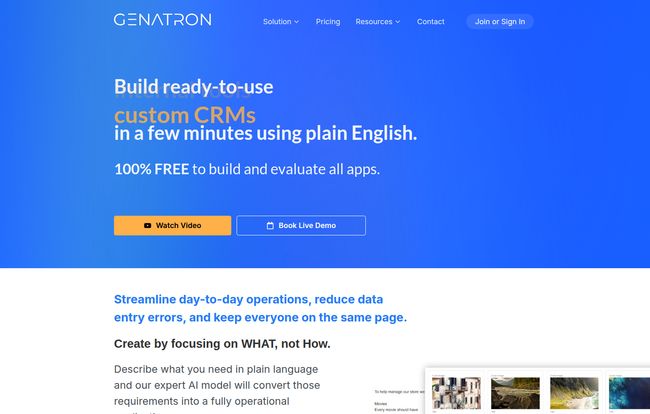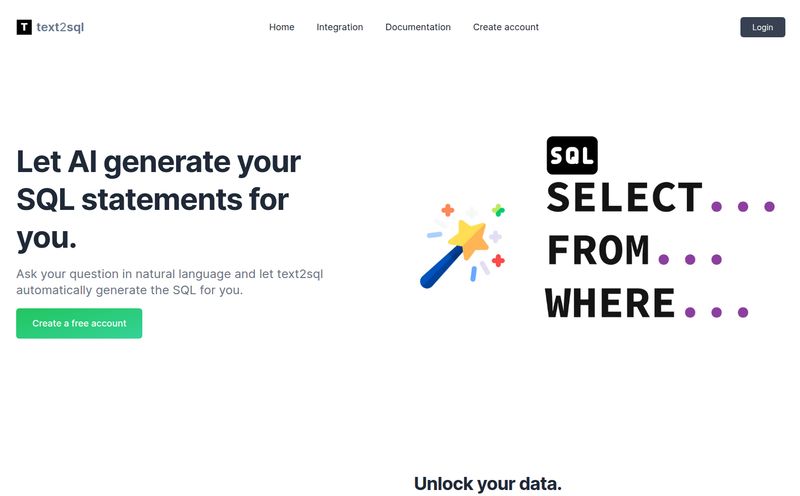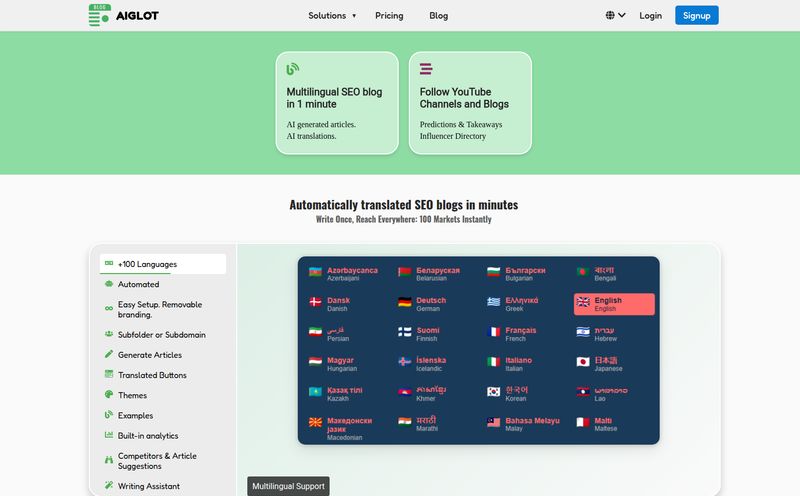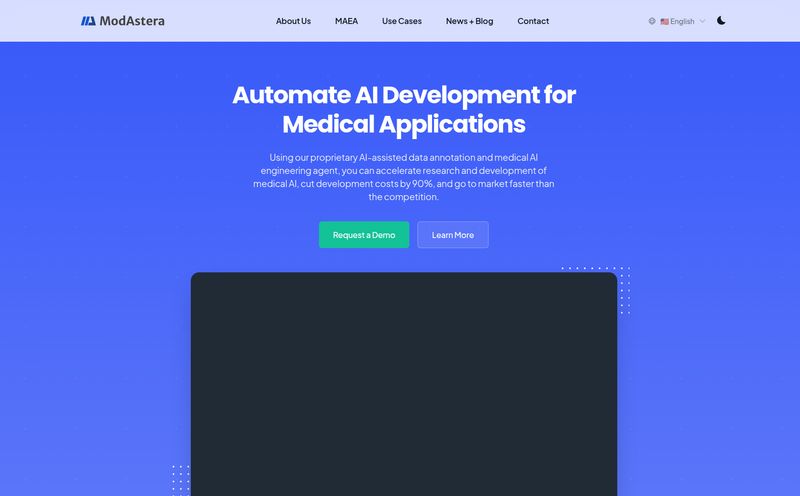I’ve spent more hours than I’d like to admit staring at spreadsheets that were clearly crying out to be something more. You know the ones. The inventory tracker that’s just a mess of VLOOKUPs. The customer list that’s one accidental keystroke away from total chaos. We’ve all been there, thinking, “This should be an app.”
Then comes the reality check. The cost of hiring developers. The time commitment. Trying to translate your needs into technical specs. It’s a whole thing. The no-code movement was a huge step forward, giving us tools like Bubble and Adalo. But even they have a learning curve. You still have to think like a developer, dragging and dropping logic blocks and connecting databases.
So, when I stumbled upon a platform called Genatron, my interest was definitely piqued. Their claim is… bold. Build ready-to-use business apps in minutes, just by describing them in plain English. No drag-and-drop. No visual programming. Just… words. My inner skeptic immediately raised an eyebrow, but the part of me that loves efficiency and new tech was already signing up. Could it really be that simple?
So, What Exactly is Genatron?
Let's get one thing straight: Genatron isn’t your typical no-code builder. It’s a different beast entirely. Instead of giving you a canvas and a box of digital LEGOs, it gives you a text box. You write down what you need—an app to manage sales leads, a tool to track project tasks, a system for logging customer support tickets—and its AI gets to work.
It’s an AI-powered platform designed specifically for creating back-office applications, admin panels, and internal tools. Think of it less like a tool for building the next Instagram and more like a solution for finally fixing that god-awful inventory spreadsheet. It translates your written requirements into a fully functional application with record management, reporting, and even charts.
The best analogy I can think of? It’s like having a hyper-fast, incredibly literal junior developer on staff. You hand them a detailed set of written instructions, and a few minutes later, they hand you back a working prototype. No coffee breaks, no misunderstandings about what a 'user story' means. Just results. It's a fascinating approach to application development.
The 3-Step Process: From Wishlist to Working App
The Genatron homepage boasts a simple 3-step process, which I can confirm is pretty accurate. It really boils down to this:
- Provide Requirements: This is your part. You open up the generator and start typing. For example: “I need an application to manage my list of clients. I need to store their name, email, phone number, and the date they became a client. I also want to see a list of all clients, and be able to add, edit, and delete them.”
- Generate: You hit the button and the AI does its thing. It analyzes your text, identifies the entities (clients), the fields (name, email), and the required functions (add, edit, delete). This part is surprisingly fast. We're talking minutes, not hours.
- Review: The platform spits out your application. You can click around, test it, and see if it matches what you had in mind. If something's not quite right, you don't have to start from scratch. You can refine your English description and regenerate. Maybe you want to add a “status” field for each client. You just add that to your text and go again.
This iterative process is where the real power lies. You can quickly prototype and refine an idea without writing a single line of code.

Visit Genatron
The Good, The Bad, and The AI
Alright, no tool is perfect. After playing around with it for a while, I’ve got a good feel for where Genatron shines and where it, well, requires a bit more patience. It's not magic, it's technology, and it comes with its own set of quirks.
What I Absolutely Loved
The speed is the first thing that hits you. It’s genuinely impressive. Creating a basic CRUD (Create, Read, Update, Delete) app in under five minutes feels like a superpower. For anyone who has been stuck in the endless backlog of an IT department, this is a breath of fresh air.
Second, it’s truly “no code” in a way that other platforms aren’t. My mom, who thinks 'the cloud' is an actual cloud, could probably build a simple app with Genatron. The skill isn’t in technical logic; it's in being a clear communicator. If you can write a decent email, you can use this platform. This lowers the barrier to entry almost to the floor.
And the big one: it’s 100% free to build and evaluate. This is not a free trial with a credit card required. You can build, rebuild, and test your app as many times as you want until you're absolutely sure it's what you need. You only pay when you decide, “Yes, this is it. I want to download and deploy it.” This model shows incredible confidence in their product.
The Reality Check
Now for the other side of the coin. The AI, as smart as it is, is not a mind reader. This goes back to my “incredibly literal junior developer” analogy. If your instructions are vague or ambiguous, you'll get a vague or ambiguous app. The quality of the output is directly proportional to teh quality of your input. You have to be specific.
This means there can be a bit of a learning curve in figuring out how to describe what you want for the best results. You might need to refine and rebuild a few times to get it just right. It’s not a failure of the platform, just the nature of communicating with an AI. Patience is a virtue here.
Who Is This Really For?
So who should be sprinting to try Genatron? In my opinion, it hits a sweet spot for a few key groups:
- Small Businesses & Startups: Need a custom internal tool but don't have the budget for a dev team? This is your answer. Manage inventory, track leads, build a simple CRM. You can get a bespoke solution for a fraction of the traditional cost.
- Department Managers: Are you in marketing, sales, or HR and tired of waiting on the IT department? You can take matters into your own hands. Build that tool you need to manage your team’s projects or track campaign results, and do it this afternoon.
- Consultants & Solopreneurs: You can quickly spin up custom apps for your own processes or even as part of a solution for a client. It's a powerful tool to have in your arsenal.
It’s not for building complex, public-facing SaaS products from the ground up, but for internal business operations, it's a potential game-changer.
Let’s Talk Money: The Genatron Pricing Model
This is where things get really interesting. Genatron has a refreshingly straightforward pricing structure, especially compared to the often convoluted SaaS world.
| Plan | Price | Best For |
|---|---|---|
| Standard | $599 (One-Time) | Most businesses and teams. Includes unlimited users, no resource limits, deploy to any platform, and support. |
| Custom | Contact for Pricing | Resellers, SaaS platforms, or those needing custom licensing. Pay-as-you-grow model. |
The Standard plan is the main event here. A $599 one-time fee is almost unheard of. No monthly charges. Unlimited users. The ability to deploy the app on your own infrastructure. This is incredible value. Keep in mind, as their site mentions, the final price can be affected by complexity—things like the number of entities, dashboards, or if you need advanced features like SSO. But for a standard business app, that one-time fee is the benchmark.
Genatron vs. Traditional No-Code Platforms
Some might argue that you lose the granular control you get with a platform like Bubble or Retool. And they aren't wrong. Those platforms are like having a full workshop where you can build anything you can imagine, piece by piece. They offer immense flexibility, but also a steep learning curve.
Genatron takes a different path. It's not a workshop; it’s a high-tech factory. You provide the specifications, and it manufactures the product for you. You trade some of that fine-grained control for breathtaking speed and simplicity. For 80% of internal business app needs, I'd argue that's a trade worth making. You're not building a masterpiece of software architecture; you're solving a business problem. Fast.
My Final Verdict: Should You Try Genatron?
After diving in, I'm genuinely excited about what Genatron represents. It's the next logical step in the democratization of software development. It successfully lowers the barrier to creating custom tools, empowering people who understand the business problem to create the solution themselves.
Is it a silver bullet that will replace all developers? Of course not. But it's an incredibly powerful tool for a specific and very common set of problems. It’s for the business manager who just needs a better way to track things, the startup founder who needs an MVP internal tool yesterday, and the consultant who wants to deliver more value.
Given that you can build and test your app completely free of charge, there is literally no reason not to give it a shot. Go on, try to break it. Describe the most convoluted internal tool you can think of and see what it spits out. You might be pleasantly surprised.
Frequently Asked Questions
- How long does it really take to create an app with Genatron?
- For a simple app (e.g., a contact list or task tracker), you can genuinely have a working version in 5-10 minutes. More complex apps with multiple relationships and reports will take longer, mostly because you'll spend more time refining your description.
- What happens if I'm not satisfied with the generated app?
- You just don't pay. You can either abandon the project or, more likely, tweak your English description and regenerate it. The idea is to iterate until you're happy before you ever spend a dime.
- Can I really deploy the app anywhere?
- Yes. Once you purchase the app, you get the files and can host it on any platform you choose, whether it's your own server, AWS, Azure, or another cloud provider. You're not locked into their ecosystem.
- Is the $599 Standard price really a one-time fee?
- Yes, for the generated application. It's a one-time purchase price, not a recurring subscription. This is a major selling point. The price can vary based on the app's complexity, but the model is a one-time purchase.
- Do I need to be a good writer to use Genatron effectively?
- You don't need to be Shakespeare, but you do need to be clear and specific. The AI responds to precise, unambiguous language. Think of it like writing a clear set of instructions for a new employee. The clearer you are, the better the result will be.
Reference and Sources
- Genatron Official Website
- Genatron Pricing Page
- Forbes - The Rise Of AI In No-Code And Low-Code Platforms



